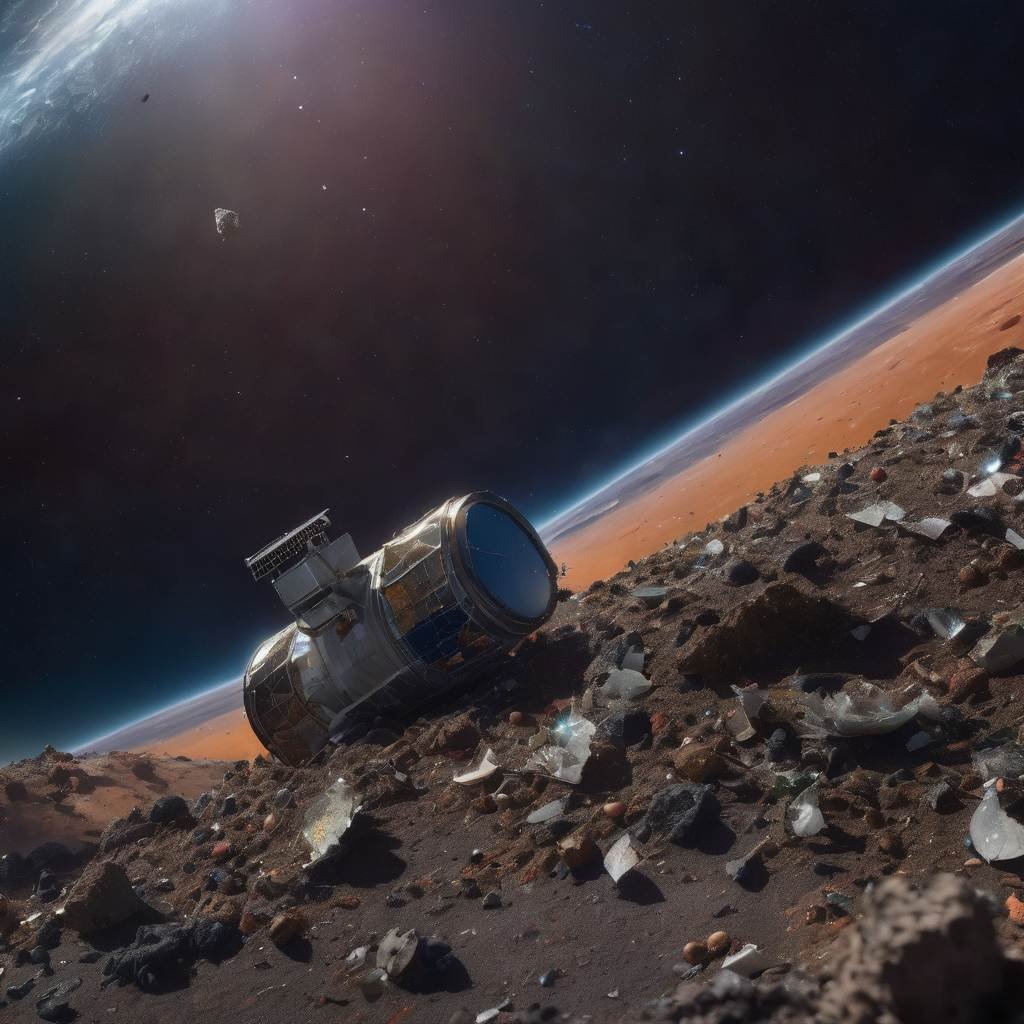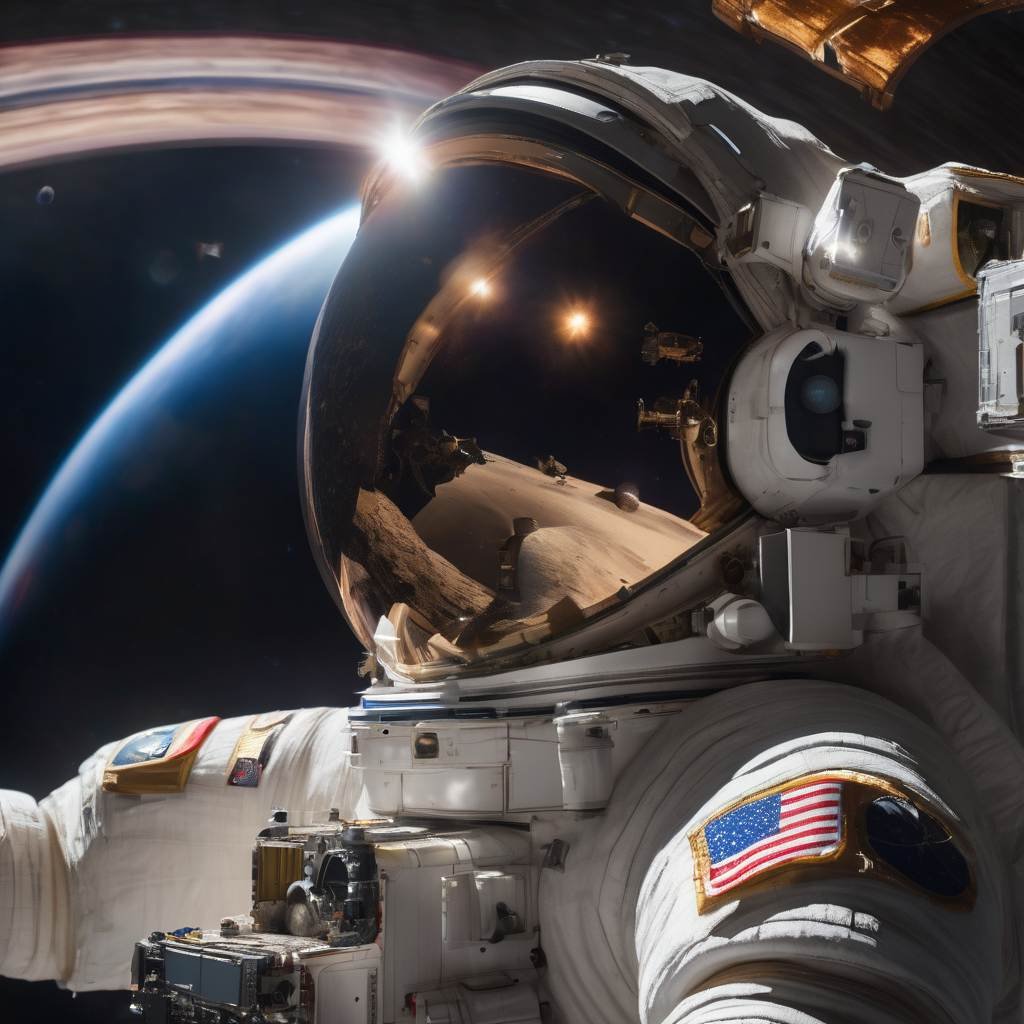Introduction On Navigating The Space Odyssey
Embark on a cosmic journey with ChangeofTech.com as we delve into the wonders of space exploration in our blog post, “Navigating the Space Odyssey.” In this celestial adventure, we’ll navigate the vastness of the cosmos, uncovering technological marvels, probing the mysteries of our universe, and contemplating the future of space exploration.
Table of Contents
The Pioneers of Space Exploration
Take a step back in time to the early days of space exploration. From the launch of Sputnik to the iconic Apollo moon missions, discover the pioneering efforts that laid the foundation for humanity’s journey beyond Earth.
The Space Odyssey began with courageous endeavours like the Apollo 11 mission, where humans first set foot on the moon. We’ll explore the challenges, triumphs, and collective ambition that propelled us into the cosmos, forever altering our perspective of the universe.

Modern Rockets and Launch Technologies

Fast forward to the present, where cutting-edge rocket technology propels us into space. Delve into the advancements in propulsion systems, reusable rocketry, and how private companies are transforming the space industry landscape.
Modern rockets, such as SpaceX’s Falcon and Starship, showcase the evolution of launch technologies. Reusable rocket stages reduce costs and increase accessibility to space, fostering innovation and opening new possibilities for exploration, satellite deployment, and scientific research.
Interplanetary Exploration
Beyond Earth’s Horizon Venture beyond Earth’s orbit to explore interplanetary missions. From rovers on Mars to probes exploring the outer reaches of our solar system, witness the technological achievements that extend our understanding of neighbouring planets and celestial bodies.
Interplanetary exploration has expanded our knowledge of the solar system. Rovers like Curiosity and Perseverance are our robotic eyes on Mars, while probes like Voyager continue their journey into the vastness of space, sending back invaluable data about distant planets and their moons.

Space Telescopes and Observatories

Gaze into the cosmos through the lenses of space telescopes and observatories. From the iconic Hubble Space Telescope to upcoming projects like the James Webb Space Telescope, explore how these instruments unveil the secrets of distant galaxies, nebulae, and exoplanets.
Space telescopes provide a window to the universe, capturing breathtaking images and conducting groundbreaking research. The Hubble Space Telescope has been instrumental in shaping our understanding of the cosmos, and the James Webb Space Telescope promises to usher in a new era of astronomical discovery.
The Future of Space Exploration
Moon Bases and Beyond Peer into the future of space exploration, where plans for lunar bases and missions to Mars are on the horizon. Uncover the ambitions of space agencies and private entities as they chart a course for human settlement beyond Earth.
The dream of establishing a human presence beyond Earth is becoming a reality. Moon bases, planned Artemis missions, and ambitious plans for Mars colonization are shaping the future of space exploration. We’ll explore the challenges, possibilities, and the collective vision driving these endeavors.

Space Tourism

Bridging the Gap to the Stars Peer into the evolving landscape of space tourism. From suborbital flights to orbital experiences, discover how private companies are making space more accessible to civilians, turning the dream of space travel into a tangible reality.
Space tourism ventures, such as Blue Origin’s New Shepard and SpaceX’s Crew Dragon, promise civilians a taste of weightlessness and a glimpse of Earth from space. We’ll explore the implications of this emerging industry and its potential impact on the future of space exploration.
Space Debris and Sustainability
Explore the challenges posed by space debris and the efforts to ensure the sustainability of outer space. From defunct satellites to spent rocket stages, uncover the initiatives aimed at mitigating the growing issue of orbital debris.
The proliferation of space activities has led to an increase in space debris, posing risks to operational satellites and future space missions. We’ll delve into the strategies and technologies designed to address this challenge, ensuring a sustainable and clutter-free environment in orbit.

International Collaboration in Space Exploration

Explore the collaborative efforts among nations in the pursuit of space exploration. From international space stations to joint missions, witness how countries come together to pool resources, knowledge, and expertise for the advancement of human space exploration.
Space exploration has transcended national boundaries, with collaborative projects like the International Space Station (ISS) exemplifying the spirit of international cooperation. We’ll delve into the significance of these collaborations and their contributions to scientific discovery and technological advancement.
The Role of Artificial Intelligence in Space Exploration
Discover how artificial intelligence (AI) is revolutionizing space exploration. From autonomous rovers to AI-driven data analysis, explore the ways in which smart technologies are enhancing our ability to navigate and understand the cosmos.
AI plays a pivotal role in space exploration, assisting in autonomous navigation, data analysis, and decision-making. Rovers on distant planets utilize AI for terrain navigation, while machine learning algorithms sift through vast datasets, uncovering patterns and anomalies that human analysts might miss.

FAQs: On Navigating The Space Odyssey

Q1: How do reusable rockets work?
A1: Reusable rockets are equipped with multiple stages. After launch, the lower stage returns to Earth, landing vertically for refurbishment and reuse. This approach significantly lowers the cost of launching payloads into space, making space exploration more economically viable.
Q2: What role do private companies play in space exploration?
A2: Private companies, like SpaceX, Blue Origin, and others, play a pivotal role in advancing space exploration. They bring innovation, competition, and cost efficiency to the industry, fostering a new era of collaboration between governments and private entities.
Q3: How does the Hubble Space Telescope capture images in space?
A3: The Hubble Space Telescope captures images using its advanced optical system and instruments. It orbits Earth, avoiding atmospheric distortion, and captures high-resolution images in various wavelengths of light, enabling astronomers to study celestial objects with unparalleled clarity.
Q4: What makes the James Webb Space Telescope significant?
A4: The James Webb Space Telescope is designed to be the successor to Hubble, offering improved sensitivity and observing capabilities. It will focus on infrared observations, allowing scientists to study the early universe, exoplanets, and distant galaxies with unprecedented precision.
Q5: How much does it cost to participate in space tourism?
A5: The cost of space tourism varies, but it is generally a significant investment. Suborbital flights may cost hundreds of thousands of dollars, while orbital experiences can reach millions. However, ongoing developments aim to lower costs and increase accessibility in the future.
Q6: Are there any health requirements for space tourists?
A6: Space tourism companies typically have health requirements to ensure the safety of participants. While the specific criteria may vary, participants are generally required to meet certain health standards to withstand the physical demands of space travel.
Q7: How is space debris monitored?
A7: Space debris is monitored using ground-based radars and telescopes. Tracking systems keep tabs on objects in Earth’s orbit, providing data on their location and trajectory. This information helps space agencies and operators avoid potential collisions.
Q8: What measures are being taken to mitigate space debris?
A8: Efforts to mitigate space debris include guidelines for spacecraft disposal, designing satellites for re-entry, and developing technologies for active debris removal. The goal is to prevent the creation of new debris and actively remove existing fragments to reduce the risk of collisions.
Q9: How do countries collaborate on space missions?
A9: Countries collaborate on space missions through agreements and partnerships. Joint ventures, like the ISS, involve contributions from multiple nations, each providing expertise, funding, and resources. These collaborations foster shared scientific goals and promote peaceful cooperation in space.
Q10: What are the benefits of international collaboration in space exploration?
A10: International collaboration in space exploration yields numerous benefits, including cost-sharing, access to diverse expertise, and the pooling of resources. It fosters a global perspective on scientific research, accelerates technological advancements, and promotes peaceful cooperation in the exploration of the cosmos.
Q11: How is AI used in autonomous space exploration?
A11: AI in autonomous space exploration enables spacecraft and rovers to make real-time decisions without constant human intervention. AI algorithms process data from onboard sensors, allowing vehicles to navigate, avoid obstacles, and execute tasks without direct human control.
Q12: Can AI help in the search for extraterrestrial life?
A12: AI is increasingly employed in the search for extraterrestrial life. Machine learning algorithms analyze data from telescopes and probes, aiding scientists in identifying potentially habitable exoplanets and analyzing signals that may indicate the presence of alien life.
Conclusion: On Navigating The Space Odyssey
In conclusion, “Navigating the Space Odyssey” is a testament to humanity’s insatiable curiosity and the technological marvels that propel us into the cosmos. From the early days of space pioneers to the upcoming era of lunar bases and Mars missions, our journey through space continues to captivate and inspire.
As we navigate the vastness of the Space Odyssey, ChangeofTech.com remains your guide to the cosmic wonders that unfold before us. Join us in the ongoing exploration of the final frontier, where human ingenuity and technological innovation converge to unveil the mysteries of the universe.

Pingback: Green Tech Sustainable Solutions - changeoftech.com